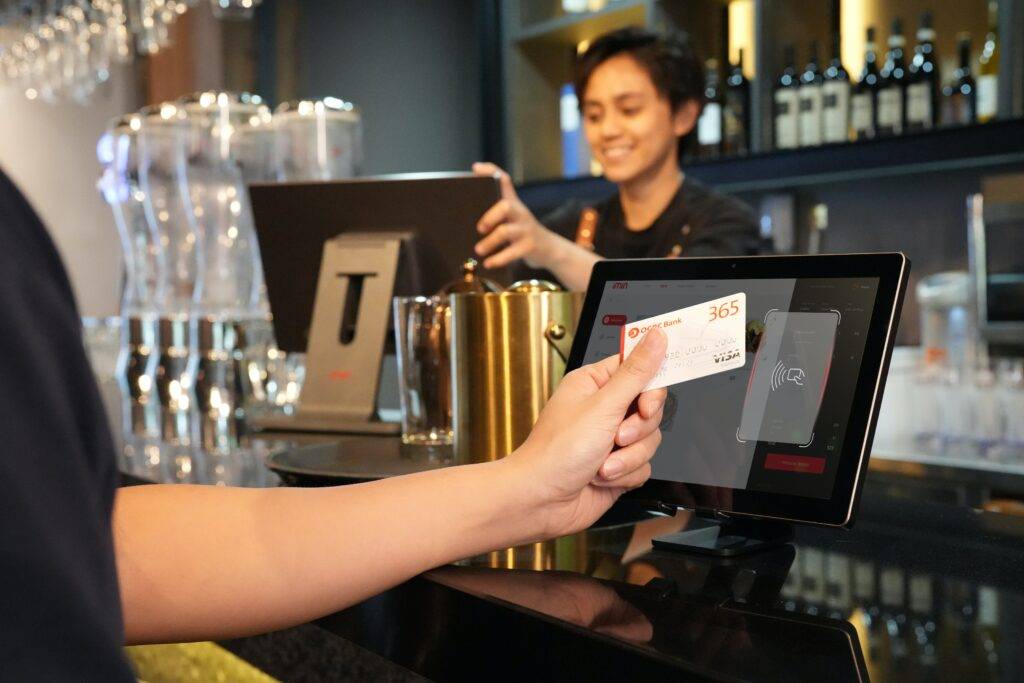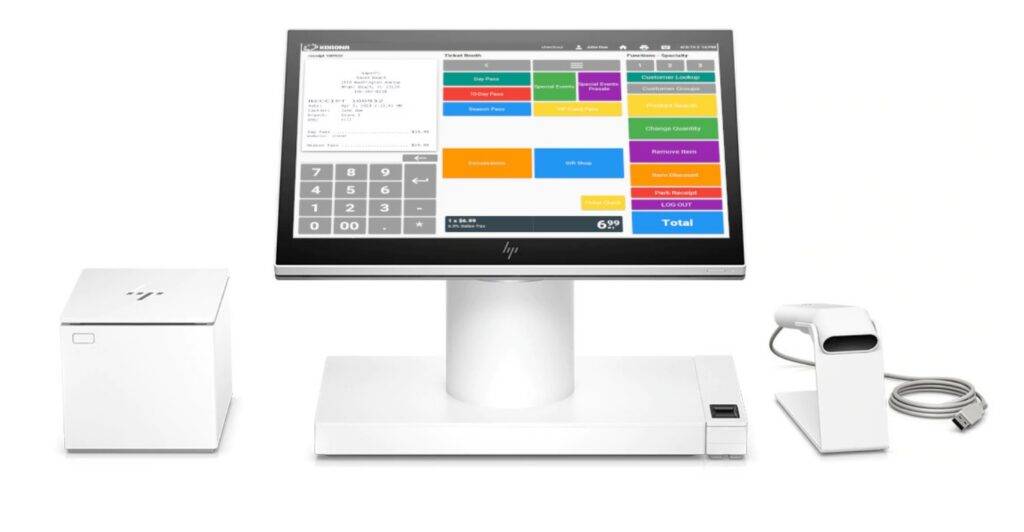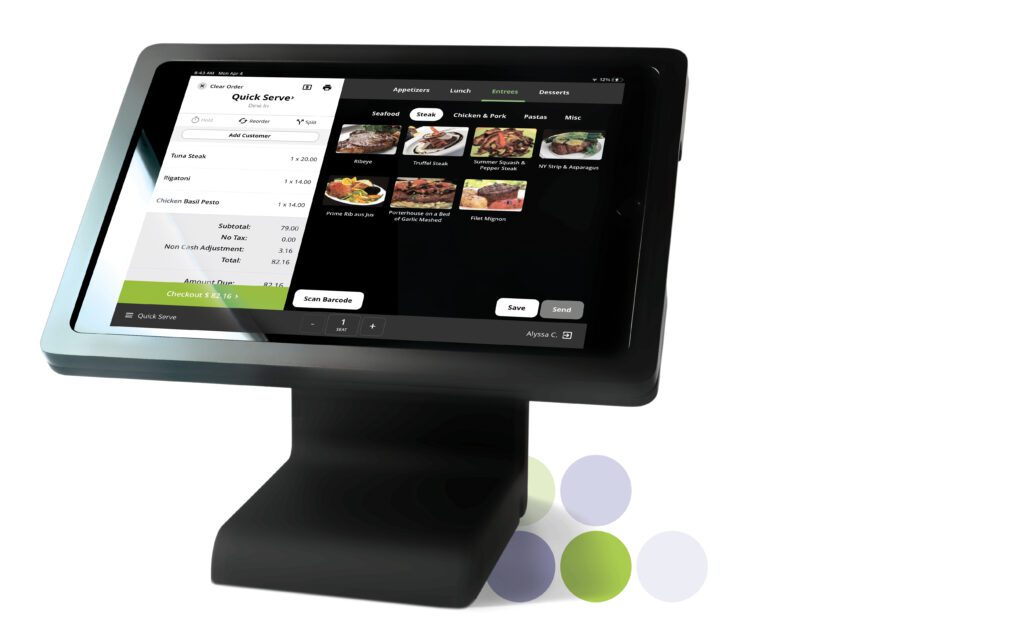Are you a restaurant owner looking to streamline your operations, enhance customer experience, and boost your revenue? Look no further than the world of point-of-sale (POS) systems designed specifically for restaurants. In this digital age, having the best restaurant point of sale system is crucial for staying ahead in the competitive food industry. From advanced order management to inventory tracking and integrated payment processing, these systems offer a plethora of features aimed at revolutionizing the way restaurants operate.
Choosing the Right Restaurant Point of Sale System
When it comes to choosing the right restaurant point of sale system, there are a few key factors to consider. First and foremost, it’s essential to prioritize a system that is user-friendly and intuitive for your staff. This will not only streamline operations but also minimize training time for new employees. Additionally, opt for a POS system that offers robust reporting and analytics capabilities, allowing you to gain valuable insights into your business performance and customer behavior.
Moreover, integration with other software and services is critical in today’s tech-driven restaurant landscape. Look for a POS system that seamlessly integrates with reservation platforms, online ordering systems, inventory management tools, and accounting software to ensure maximum efficiency across all aspects of your operation. By focusing on these criteria, you can confidently select the best restaurant point of sale system that aligns with your specific needs and sets your establishment up for sustained success.

Customers today want fast service and personalized experiences. Restaurants need a strong POS system to compete. A modern POS system improves efficiency and provides valuable business insights. Investing in a POS system can enhance your restaurant.
Key Features to Look for
When choosing a point of sale system for your restaurant, there are key features that can make a significant difference in the efficiency and effectiveness of your operations. One important feature to look for is robust inventory management capabilities. A system that allows you to track stock levels, manage ingredient costs, and automate reordering can help streamline your kitchen workflows and reduce waste.
Another crucial feature is seamless integration with online ordering platforms. In today’s digital age, offering online ordering options is essential for many restaurants. Therefore, ensuring that your point of sale system can seamlessly integrate with popular delivery apps and online ordering systems will be vital for keeping up with customer demands. Lastly, customizable reporting and analytics tools should not be overlooked. Having access to detailed sales reports, customer data analysis, and performance metrics can provide valuable insights for making informed business decisions and improving overall profitability.
By considering these key features when evaluating different restaurant point of sale systems, you can invest in a solution that truly meets the unique needs of your establishment and helps drive success in an increasingly competitive industry.
Streamlining Operations for Efficiency and Accuracy
Restaurants can become more efficient and accurate by simplifying their operations. One way to do this is by using a point-of-sale (POS) system. This system brings together different parts of the restaurant, like orders, inventory management, and financial reporting. By automating these tasks, restaurants can avoid mistakes from manual data entry and save time on administrative work. A POS system also lets restaurants track and analyze sales data in real-time, giving them insights into customer preferences and buying habits. This information helps with menu planning, pricing, and promotions. With accurate data, restaurant owners can easily identify trends and make decisions to boost profits.
A POS system helps restaurants run better and makes customers happier. It allows customers to order and pay with their phone, making things faster and more convenient. It also helps staff by simplifying their work, allowing them to focus on providing excellent customer service instead of paperwork. A good POS system is crucial for a restaurant to be the best it can be.
– User-friendly interface
When it comes to restaurant point of sale systems, a user-friendly interface is essential for smooth operations and customer satisfaction. A well-designed interface should be intuitive, with easy access to key functions such as order entry, table management, and payment processing. It should also offer customizable layouts and quick navigation to minimize training time for staff members.
Furthermore, a user-friendly interface can enhance the overall dining experience for customers. With an efficient POS system, waitstaff can take orders swiftly and accurately, resulting in faster service and happier diners. Additionally, a visually appealing interface can showcase menu items effectively, leading to more upselling opportunities and increased revenue for the restaurant.
In conclusion, prioritizing a user-friendly interface in a restaurant point of sale system is crucial for streamlining operations and creating a positive dining environment. By focusing on ease of use for both staff and customers, restaurants can maximize efficiency while delivering exceptional service that keeps patrons coming back for more.
– Customizable menu options
When it comes to restaurant point of sale systems, customizable menu options are a vital feature that can enhance the overall dining experience for customers. The ability to easily customize menus allows restaurants to cater to specific dietary restrictions, varying tastes, and seasonal ingredients with ease. This flexibility not only adds an element of personalization for the customer but also enables the restaurant to streamline their operations and reduce food waste. With customizable menu options, establishments can effortlessly update offerings and experiment with new dishes without overhauling their entire system, fostering innovation in the culinary experience.
Moreover, customizable menu options empower restaurants to respond promptly to market trends and consumer preferences. By being able to swiftly adjust prices or incorporate new items into the menu, businesses can stay competitive and relevant in a dynamic industry. Additionally, this feature offers an opportunity for upselling by allowing upsell prompts or suggestions within the ordering process itself. Overall, incorporating customizable menu options into a restaurant’s point of sale system is not just about convenience; it’s about adapting to a constantly changing landscape while delivering a more tailored and enjoyable dining experience for patrons.
– Integration with online ordering platforms
In today’s fast-paced world, integrating with online ordering platforms is no longer just an option for restaurants; it’s a necessity. By seamlessly connecting their point-of-sale systems with popular online ordering platforms such as UberEats, DoorDash, and Grubhub, restaurants can cater to the growing demand for online delivery and takeout services. This integration not only allows restaurants to reach a wider customer base but also streamlines order management and inventory control. With real-time syncing between the online platform and the restaurant’s POS system, staff can efficiently process orders while keeping track of available stock levels.
Furthermore, integration with online ordering platforms empowers restaurants with valuable insights into customer preferences and ordering patterns. By analyzing data from these platforms through their POS systems, restaurateurs can make informed decisions regarding menu offerings, pricing strategies, and marketing initiatives. This enhanced visibility helps them tailor their services to meet evolving consumer demands and stay competitive in an increasingly digital marketplace. Moreover, by leveraging these insights effectively, restaurateurs can cultivate stronger customer relationships and drive repeat business through personalized promotions or loyalty programs tied directly to their POS system.
Top Restaurant POS Systems in the Market
When it comes to choosing the best restaurant point of sale systems, several top options stand out in the market. One such system is Toast, which offers a comprehensive range of features tailored specifically for the food and beverage industry. With its user-friendly interface and robust reporting capabilities, Toast is a popular choice among restaurateurs looking to streamline their operations and enhance customer service.
Another standout POS system worth considering is Square. Known for its affordability and intuitive design, Square provides restaurants with a highly customizable platform that can be adapted to fit their unique needs. Its seamless integration with various third-party apps also makes it a versatile option for those seeking additional functionalities beyond traditional POS capabilities. Overall, these top restaurant POS systems demonstrate how technology continues to revolutionize the dining experience, empowering businesses to operate more efficiently and provide exceptional service to their patrons.
In addition to Toast and Square, Upserve also ranks high on the list of best restaurant point of sale systems. With its focus on data-driven insights and real-time analytics, Upserve empowers restaurant owners with valuable information that can inform critical business decisions. Its inventory management tools further promote cost control and efficiency within an establishment’s daily operations. As the demand for advanced POS solutions continues to rise in the competitive restaurant industry, these top systems pave the way for enhanced customer experiences and operational excellence.
– Lavu
Lavu is revolutionizing the restaurant industry with its cutting-edge point of sale system that combines ease of use with powerful functionality. With customizable features and intuitive interface, Lavu provides restaurant owners with the tools they need to streamline operations and improve customer service. Its cloud-based design allows for real-time access to critical business data, giving owners the ability to make informed decisions on the fly.
The flexibility and scalability of Lavu make it an ideal solution for any type of restaurant, from small cafes to large chains. Its seamless integration with other essential business tools such as inventory management, loyalty programs, and online ordering makes it a comprehensive solution for modern restaurateurs. As technology continues to shape the way we do business, Lavu remains at the forefront of innovation, constantly evolving to meet the ever-changing needs of the restaurant industry.
– Korona
Korona, known for its intuitive and user-friendly interface, has become a game-changer in the restaurant point of sale systems industry. Its seamless integration with other business management tools allows for efficient tracking of inventory and sales data. Moreover, Korona’s customizable features cater to the specific needs of restaurant owners, offering various functionalities such as table management and menu flexibility.

With the growing demand for contactless payment options post-pandemic, Korona has quickly adapted to incorporate NFC capabilities and mobile payment integrations. This forward-thinking approach enhances customer experience by reducing wait times and providing a more convenient checkout process. Additionally, Korona’s cloud-based system ensures real-time updates across multiple devices, enabling restaurateurs to monitor their operations remotely while maintaining data security. As restaurants pivot towards a tech-savvy future, Korona stands out as an innovative solution that streamlines processes and improves overall efficiency.
– Lightspeed
When it comes to restaurant point of sale systems, one name stands out for its lightning-fast speed and efficiency: Lightspeed. Imagine a bustling Friday night at a popular eatery, where orders are pouring in, tables need turning, and payments must be processed swiftly. Lightspeed seamlessly handles all these demands with remarkable speed, ensuring that operations run smoothly and customers receive prompt service. This level of agility is crucial in the fast-paced world of hospitality, allowing staff to focus on delivering exceptional dining experiences rather than being bogged down by clunky technology.
What’s more, Lightspeed’s quick processing capabilities contribute to enhanced customer satisfaction by reducing wait times and streamlining the ordering process. With this system in place, diners can enjoy their meals without unnecessary delays, while restaurant owners benefit from improved table turnover and increased revenue. Ultimately, Lightspeed’s rapid performance not only elevates operational efficiency but also adds an extra layer of sophistication to the overall dining experience. In today’s digital age where speed is king, choosing a POS system like Lightspeed can give restaurants the competitive edge they need to thrive in a dynamic industry.
– Upserve
Upserve is a leading point of sale system specifically designed for restaurants, offering a comprehensive suite of tools to help streamline operations and improve customer experience. One key feature that sets Upserve apart is its powerful analytics capabilities, providing real-time data on sales, inventory, and customer behavior. This data-driven approach allows restaurant owners to make more informed decisions and identify opportunities for growth.
Another aspect that makes Upserve stand out is its seamless integration with other restaurant management systems, such as reservation platforms and accounting software. This level of integration helps create a unified ecosystem for the restaurant, reducing manual work and improving overall efficiency. Additionally, Upserve’s user-friendly interface and robust reporting tools empower staff members to deliver exceptional service while also giving managers the insights they need to optimize their operations in real time. With its focus on data-driven decision making and seamless integration capabilities, Upserve continues to be an innovative solution for restaurants looking to elevate their point of sale system.
Benefits of a Quality POS System
A quality POS system can transform a restaurant’s efficiency, customer service, and overall profitability. With features such as table management, online ordering integration, and inventory tracking, it empowers staff to deliver exceptional dining experiences while streamlining operations behind the scenes. This not only reduces errors and enhances order accuracy but also boosts table turnover and increases revenue.
Moreover, a top-notch POS system is essential for data-driven decision-making. From identifying popular menu items to analyzing sales trends, the insights garnered from a quality POS can drive strategic business decisions that optimize menu offerings or promote targeted marketing campaigns. What’s more, the seamless integration of customer relationship management tools enables personalized customer interactions based on past purchasing behavior – fostering loyalty and repeat business for restaurants.
In today’s competitive restaurant industry landscape, investing in a reliable POS system is crucial for enhancing operational capabilities and providing the best possible service to patrons. By optimizing processes, enabling better decision-making, and building strong customer relationships – an advanced POS solution truly becomes an indispensable asset for any successful restaurant establishment.
– Streamlined operations
Streamlined operations are the backbone of any successful restaurant, and selecting the best point of sale system is crucial to achieving this efficiency. With an integrated POS system, restaurants can streamline order taking, kitchen communication, inventory management, and reporting processes. This not only improves overall operational efficiency but also reduces errors and increases customer satisfaction by minimizing wait times.
By leveraging features like mobile ordering and payment processing, a modern restaurant POS system can further streamline operations by enabling servers to take orders and process payments directly at the table. This not only enhances customer experience but also reduces bottlenecks at the checkout counter, leading to faster table turnover and increased revenue. Additionally, a robust POS system can provide real-time sales data insights that enable managers to make informed decisions on menu offerings, staffing levels, and inventory ordering – all contributing to smoother day-to-day operations.
– Enhanced customer experience
In today’s competitive restaurant industry, providing an enhanced customer experience is crucial for success. Modern point of sale systems play a pivotal role in achieving this goal by streamlining operations and facilitating personalized interactions with patrons. With advanced POS technology, restaurants can offer online ordering, tableside payment processing, and loyalty programs that cater to individual preferences. This not only increases efficiency but also creates a more immersive dining experience, leaving customers feeling valued and appreciated.
Furthermore, the integration of data analytics within POS systems enables restaurants to gain valuable insights into customer behavior and preferences. By leveraging this information, establishments can tailor menus, promotions, and services to better meet the needs of their clientele. This level of customization fosters customer loyalty and encourages repeat business as patrons feel understood and cared for. Ultimately, investing in a top-notch restaurant POS system goes beyond just transaction management – it becomes a powerful tool for elevating the overall dining experience for both new and returning customers alike.
Considerations When Selecting a POS System
When selecting a point of sale (POS) system for your restaurant, it’s crucial to consider the user interface and ease of use. A POS system should streamline operations and improve efficiency, so opt for a system with an intuitive interface that minimizes the learning curve for staff. Additionally, look for features such as customizable menus and order modifiers that can accommodate the specific needs of your establishment. This can enhance customer service and ensure orders are accurately processed.
Integration capabilities are another important consideration when choosing a POS system. The ability to integrate with other business tools such as inventory management, accounting software, and online ordering platforms can greatly benefit your restaurant’s operations. Seamless integration between systems reduces manual errors, improves data accuracy, and ultimately saves time and resources. When exploring different POS options, prioritize solutions that offer robust integration capabilities to enhance overall business functionality.
– Cost and pricing models
When it comes to selecting a restaurant point of sale system, understanding the cost and pricing models is crucial for making an informed decision. Traditionally, POS systems were offered as one-time purchases with upfront costs. However, with the rise of cloud-based solutions, subscription-based models have become increasingly popular. These subscription-based models often include regular updates and customer support, providing a more predictable and manageable cost structure for restaurant owners.

Another emerging trend in pricing models is the pay-as-you-go approach, where restaurants pay based on usage or transaction volume. This model offers flexibility for seasonal or growing businesses, allowing them to scale their POS expenses according to their needs. Additionally, some providers offer transparent pricing with no hidden fees or long-term contracts, giving restaurant owners peace of mind and better control over their expenses.
It’s also essential to consider additional costs such as hardware, installation, and training when evaluating POS pricing models. Some providers may offer all-inclusive packages that cover these aspects, while others may have add-on fees for specific features or services. Understanding these cost structures will help restaurant owners assess the overall value and potential return on investment of different POS systems.
– Maintenance and support services
Maintenance and support services are crucial factors to consider when choosing a restaurant point of sale system. A reliable maintenance and support plan ensures that any issues that arise with the POS system can be swiftly addressed, minimizing downtime and disruption to daily operations. This support also provides peace of mind for restaurant owners and managers, knowing that there is a dedicated team available to assist in case of technical difficulties or questions about the system.
Additionally, regular maintenance services can help ensure the optimal performance of the POS system over time. This includes software updates, hardware checks, and proactive troubleshooting to prevent potential issues from arising. With ongoing support and maintenance, restaurant staff can focus on delivering exceptional customer service without worrying about technical glitches hindering their efficiency. Ultimately, investing in quality maintenance and support services for a restaurant point of sale system is an investment in the seamless operation of the business.
In conclusion, it’s essential for restaurants to prioritize a robust maintenance and support plan when selecting a point of sale system. This will not only minimize disruptions but also contribute to the long-term reliability and effectiveness of the POS solution. By partnering with a provider that offers reliable maintenance and support services, restaurants can optimize their operations while providing an exceptional experience for both customers and staff alike.
How to Implement a New POS System
Implementing a new POS system can be a daunting task for restaurant owners, but with careful planning and execution, it can significantly streamline operations and enhance the overall customer experience. One crucial step in this process is to involve the staff from the beginning, providing comprehensive training and support to ensure a smooth transition. Encouraging open communication and fostering a sense of ownership among employees can help mitigate resistance to change and promote adoption of the new system.
It’s also essential to consider the specific needs of the restaurant when selecting a new POS system. Whether it’s tableside ordering, inventory management, or integration with other systems, identifying key functionalities that align with the business model is vital for long-term success. Moreover, maintaining flexibility in the system to accommodate future growth and technological advancements is pivotal in staying ahead in an ever-evolving industry. By carefully assessing current processes and seeking input from various stakeholders, implementing a new POS system can lead to improved efficiency and profitability for restaurants of all sizes.
– Training staff
Training staff in a restaurant environment goes far beyond simply instructing them on how to use the point of sale (POS) system. It’s about instilling a culture of excellence, customer service, and efficiency. The best POS systems not only provide comprehensive training modules but also offer ongoing support to ensure that staff are confident and adept at utilizing the technology to enhance the overall dining experience.
Effective training empowers employees to maximize their potential and deliver exceptional customer service. By incorporating role-playing scenarios and real-life examples into POS training, restaurant staff can develop problem-solving skills and learn how to handle difficult situations with grace. Additionally, providing training materials in various formats, such as video tutorials or interactive quizzes, caters to different learning styles and makes the learning process more engaging.
Furthermore, modern POS systems have features that enable managers to track staff performance and identify areas for improvement. This data-driven approach not only facilitates targeted training initiatives but also motivates employees by recognizing their strengths and achievements. Ultimately, investing in comprehensive staff training ensures that a restaurant’s point of sale system is utilized to its full potential while fostering a team of knowledgeable and confident professionals who are equipped to deliver an exceptional dining experience.
– Testing and troubleshooting
Testing and troubleshooting are critical components of a successful restaurant point of sale (POS) system. Before implementing any new POS system, thorough testing should be conducted to identify potential bugs or functionality issues. This process helps to ensure that the system performs seamlessly in a real-world restaurant setting, supporting smooth operations and excellent customer service. Additionally, regular troubleshooting is essential to address any unexpected glitches that may arise post-implementation, minimizing downtime and potential disruptions to business.

One approach gaining traction in the industry is proactive testing and troubleshooting through simulated scenarios. By creating controlled environments that mimic busy periods or unique ordering situations, restaurants can uncover potential weaknesses in their POS systems and work to address them before they impact service quality. Furthermore, leveraging feedback from staff who interact with the POS system daily is invaluable for identifying pain points and areas for improvement. Taking a proactive stance on testing and troubleshooting not only enhances operational efficiency but also demonstrates a commitment to providing a seamless dining experience.
Working with United Banc Card of TN
If you find yourself wanting to conquer your high risk business, then look no further thanUnited Banc Card of TN. With their innovative solutions and trusted POS System services, they will guide you towards financial success. Whether you are a small business owner or an individual looking to manage your finances better, United Banc Card of TN has the tools and expertise to help. Call us today @615-476-0255


